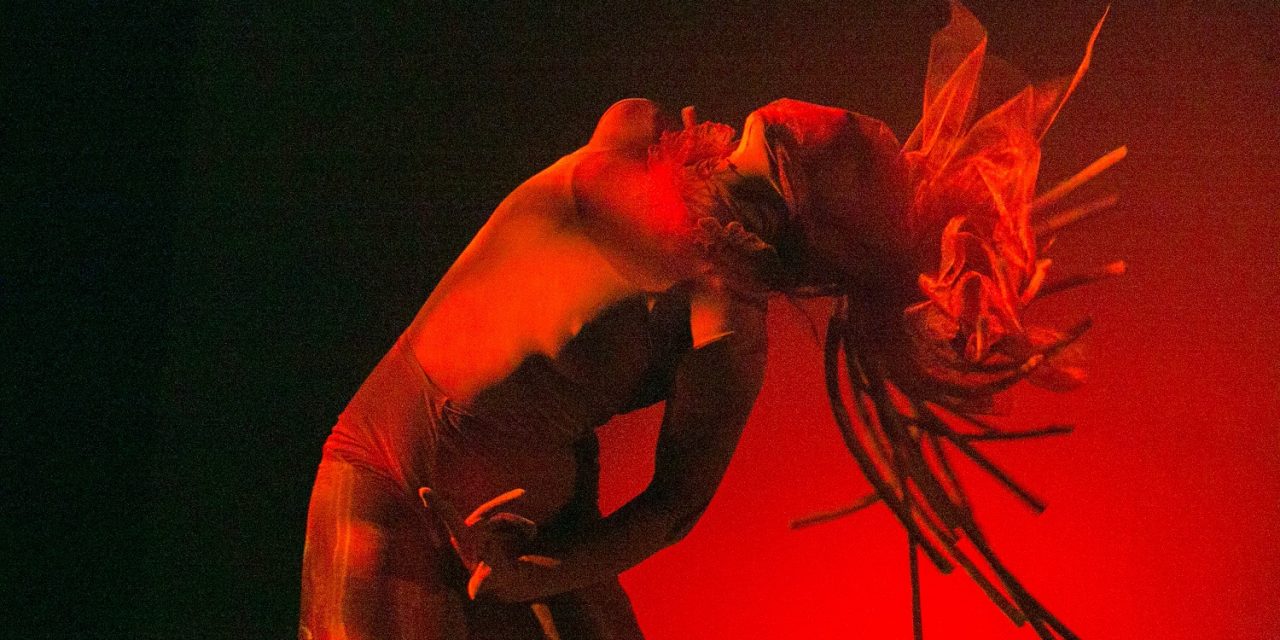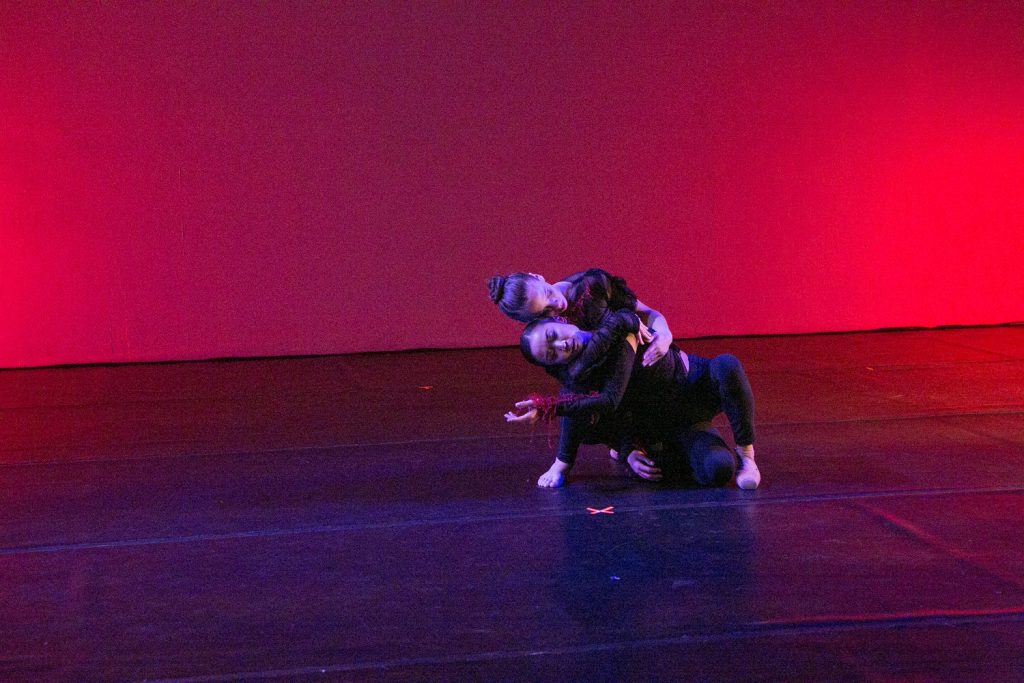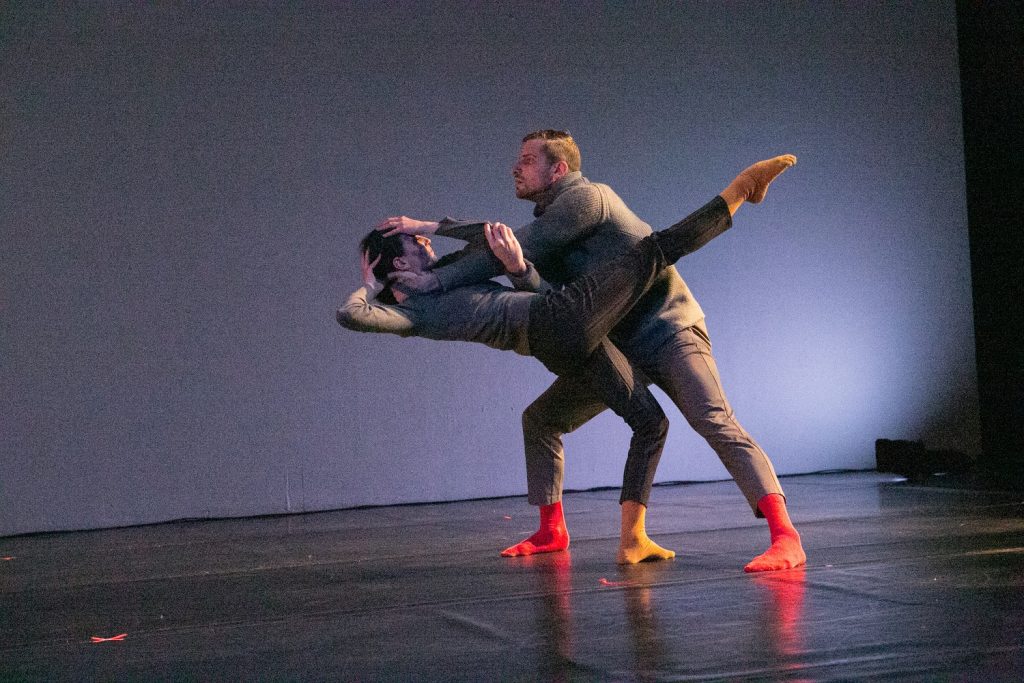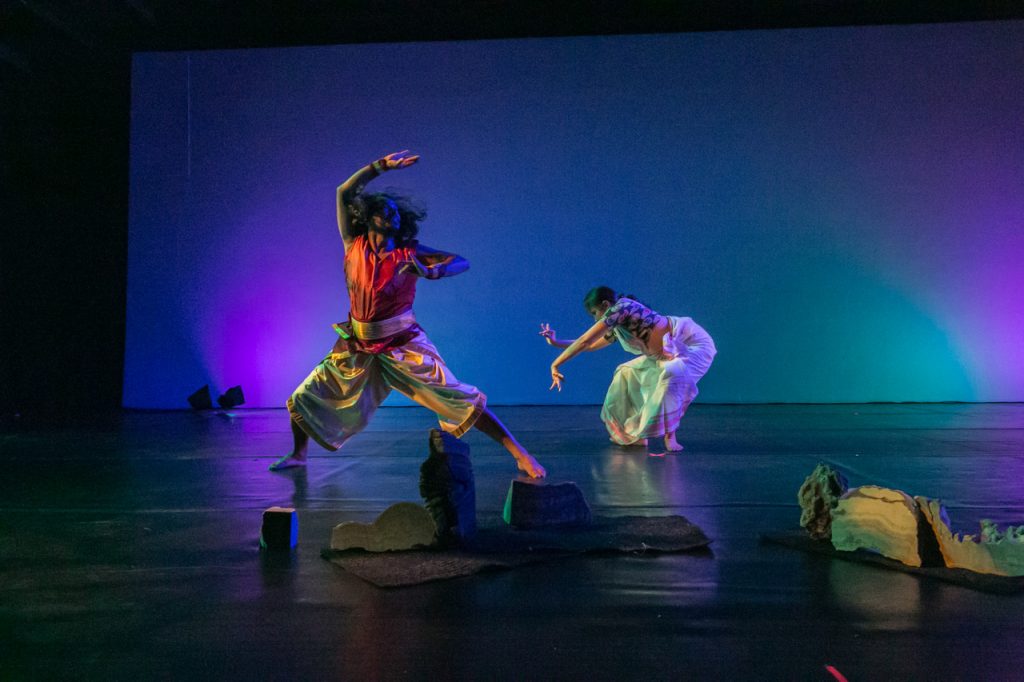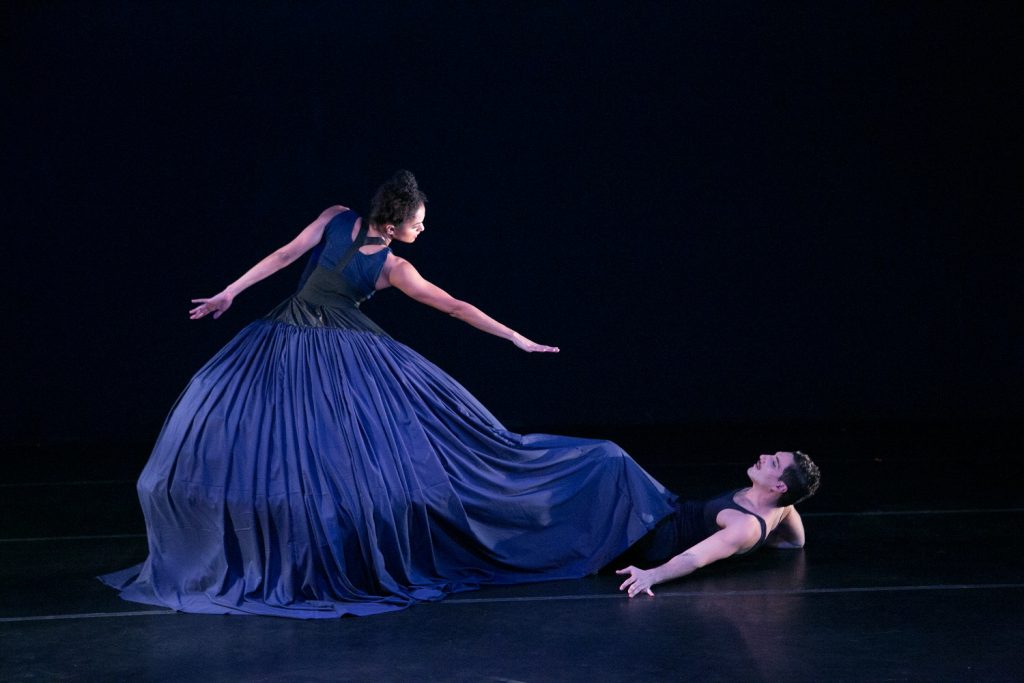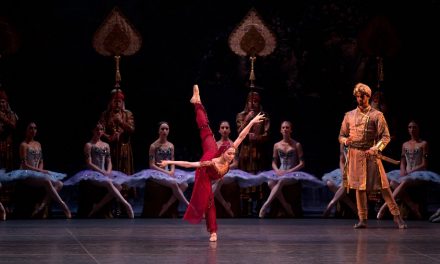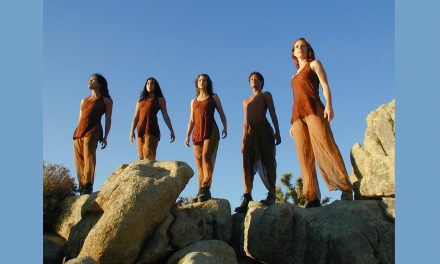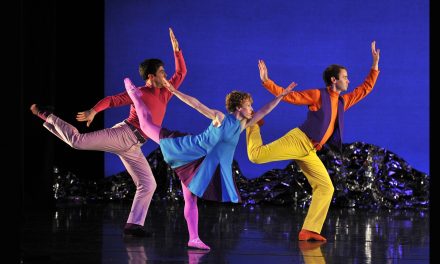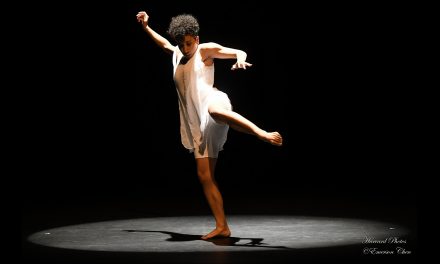This February 15 and 16, Donna Sternberg’s Awe and Wonder program took the stage at The Odyssey Theatre for its third year of scientific-choreographic collaborations. For the last few years, Sternberg has been pairing choreographers with scientists; the objective being that each scientist’s research will inspire a movement work. A few months later, all researchers come together to watch the collection of works.
The program began with Touch, choreographed by Sternberg in collaboration with dancers and based on the work of immunologist Devavani Chatterjea. This first work revolved around the complexity of exposure particularly through touch: Sternberg took her prompt literally and pulled movements from contact improvisation sessions to evoke the sensation of touch. Dancers Stephanie Cheung and Rein Short stood out among the cast, showing particularly strong technique in a duet where each wore one pointe shoe. The full cast, however (Cheung, Short, and Ani Darcy, Joseph Lister, Moises Josue Michel), had a bit of trouble finding transitions between movements; they appeared to be fighting their momentum to switch from one movement to the next. All dancers seemed to have trouble navigating the stage throughout the program, though, so I’m willing to chalk most of it up to a slippery floor.
Next came Through A Blocked Space, choreographed by James Gregg and predicated on the work of microbiologist Chelsey VanDrisse. Dancers Angela Rebelo and Andrew Brader portrayed a perceived relationship between a cystic fibrosis patient and the genetic disorder itself. VanDrisse’s research looks at the bacterial process pathogenesis. Her meetings with Gregg inspired this duet, which held all the weaving and isolating marks of Gregg’s work with WEWOLF but incorporated shifting dynamic between the two that implied the taxing nature of the condition. The piece was strikingly beautiful and intimate, but at a few moments the dancers faded out of connection with each other and the music.
Before intermission, Brigette Dunn-Korpela’s Betrayal (inspired by Shehla Pevin’s work on mammary cancer) brought a dramatic tone to the evening. Dancers Robyn O’Dell, Sydney Jacobs, and Mia Givens were costumed by Lawton in head-to-toe red, their facelessness alluding to the tendency of cancer cells to “turn on each other,” as Dr. Pevin described it. Korpela was drawn to this concept, and she certainly illustrated it well with this tense and sporadic movement. A few phrases took longer than necessary to cycle through to resolution, and without faces visible it was hard to stay with the dancers for the whole piece, especially when they recited foreboding text. Perhaps this was intentional; the description of cancer as mutinous was profound, but not at all comforting. The tension this composition brought was appropriate to subject, but I wanted more supple spine and gut movement from the dancers to convey the heaviness of the topic.
ROCK: Once I Was A Star followed, choreographed and danced by Aparna Sindhoor and Anil Natyaveda in response to the work of geologist Frank Corsetti. Corsetti’s work with biosignatures details the historical value of rocks. Sindhoor and Natyaveda focused on the rock’s ability to tell ancient stories, but perhaps a bit too literally. Voiceovers from the rock’s perspective and movements that described each word from the narration perhaps outlined the concept too factually. At times, their dancing was beautifully rooted in rhythmic narration, and these moments grounded them and brought what felt like the true essence of Corsetti’s work. Other moments were more difficult, particularly when more elementary and literal interpretations made the work drag a bit.
The program closed with One, another piece by Sternberg and dancers on Chatterjea’s findings. The gimmick in this work was the company emerging from large hoop skirt that Darcy wore, but it was a little predictable (we’ve all seen a Nutcracker where the kids run out from underneath Mother Ginger’s skirt). Darcy seemed a bit uncomfortable moving with only the upper half of her body, directing her energies into tension in her chest rather than grounding herself in the floor. Once all the dancers had found their own space, though, they came into their own for a finale made of flowing movement motifs and swirling shapes.
Awe and Wonder facilitates a breeding ground for creatives to work together; dance makers and innovative researchers bring each other ideas, and as Chatterjea explained, watching the dance unfold can also spark creative solutions in her own work. It’s a collaboration we’re becoming more used to in dance today, but to see it unfold onstage can be moving and inspiring, even if the works were in early iterations. Look out for these collaborations in more advanced stages; they’re an unexpectedly lovely combination and sure to spark future creativity.
Written by Celine Kiner for LA Dance Chronicle, February 19, 2020.
To visit the Donna Sternberg & Dancers website, click here.
Featured image: Betrayal – Choreography by B. Dunn Movement – Photo by Paul Antico

